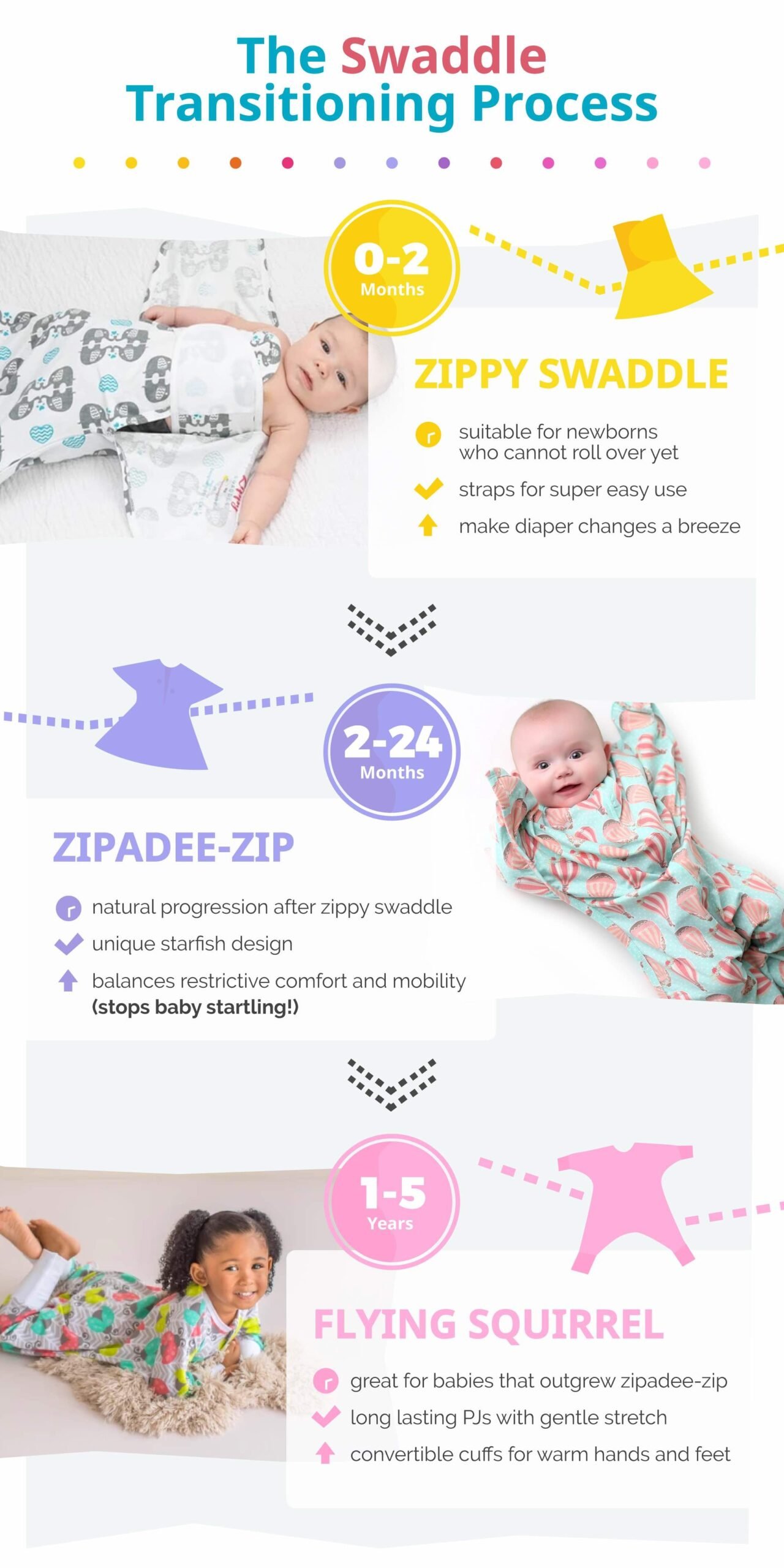Babies often have a strong startle reflex. This reflex can disturb their sleep.
Swaddling is a common solution, but it’s not always preferred. Parents might seek other methods to calm their little ones. Swaddling isn’t the only way to ease this reflex. Understanding the startle reflex is key. It helps babies react to sudden changes.
While it serves a purpose, it can also disrupt rest. There are gentle, effective alternatives to swaddling that can help. These methods can comfort your baby and encourage better sleep. By exploring these options, you can find what best suits your child. This guide will explore how to stop the startle reflex without swaddling, offering peace for both baby and parent.
Understanding Startle Reflex
Understanding the startle reflex is crucial for parents seeking to soothe their infants without relying on swaddling. The startle reflex, also known as the Moro reflex, is a natural response seen in newborns. It often manifests as sudden jerking movements or the baby throwing their arms out wide. This reflex can be alarming to new parents, but it’s a normal part of infant development.
Causes Of Startle Reflex
The startle reflex is primarily caused by loud noises or sudden movements. It’s an automatic response to perceived threats, ensuring the baby’s survival. But sometimes even subtle changes, like a shift in light or a parent’s movement, can trigger this reflex.
Environmental factors, like a busy household, can amplify the startle response. Babies are highly sensitive to their surroundings, and a chaotic environment may increase their reflexive reactions.
Interestingly, even internal sensations, such as a sudden feeling of hunger, can initiate this reflex. As infants have limited ways to communicate discomfort, the startle reflex can signal their need for attention.
Impact On Infants
The startle reflex can disturb an infant’s sleep, leading to fragmented rest. Imagine being jolted awake repeatedly throughout the night; it’s exhausting for both baby and parent.
Interrupted sleep can affect an infant’s mood and development. You might notice more fussiness and difficulty in establishing a routine if the startle reflex is frequent.
Parents often feel stressed when their baby’s sleep is disrupted. This can create a cycle where both parent and child are anxious and overtired. Recognizing the impact of this reflex is the first step toward finding solutions that work for your family.
How can you minimize the startle reflex without swaddling? Consider creating a calm environment and establishing soothing bedtime rituals. What changes can you make today to help your baby feel more secure?
Common Swaddling Challenges
Many parents face challenges with swaddling. Using sleep sacks or wearable blankets can help reduce the startle reflex. These alternatives provide comfort and security without restricting movement.
Swaddling is a popular method used by parents to soothe newborns and help them sleep better. However, it comes with its own set of challenges that can make you reconsider this approach. Understanding these challenges can guide you in finding alternative ways to calm your baby’s startle reflex without relying on swaddling.Safety Concerns
Swaddling can sometimes pose safety risks. If not done correctly, it may lead to overheating or hip dysplasia. Overheating is a serious concern as it increases the risk of Sudden Infant Death Syndrome (SIDS).You might find yourself constantly checking if your baby is too warm or if the swaddle is too tight. This constant worry can be exhausting. Have you ever wondered if there’s a safer method to ensure your baby’s comfort?Limiting Mobility
Swaddling restricts your baby’s movement. While it can prevent startling, it also limits their ability to move freely. Babies need to stretch and wiggle to develop their motor skills.Imagine your baby trying to reach for their favorite toy but unable to because of the swaddle. This limitation can be frustrating for both you and your baby. Is there a way to let your baby explore their world while still feeling secure?By addressing these common swaddling challenges, you can explore alternative methods that offer both safety and freedom for your little one.Alternative Comfort Methods
Parents explore alternative comfort methods to soothe babies’ startle reflex without swaddling. Gentle touches, calming sounds, and gradual movement can help. These techniques provide relaxation and ensure peaceful sleep for infants.
Welcoming a newborn into your life is a heartwarming experience, but it can also come with challenges like managing their startle reflex. Swaddling is often recommended, but not all babies enjoy being wrapped tightly. What can you do to help your baby feel secure without swaddling? Let’s dive into alternative comfort methods that can ease this reflex while keeping your little one cozy and calm.###Use Of Sleep Sacks
Sleep sacks are a fantastic alternative to swaddling. They’re designed like a wearable blanket, giving your baby room to move while keeping them snug and warm.Many parents find sleep sacks to be a lifesaver. They are simple to use and reduce the risk of loose blankets.Imagine your baby feeling secure as they drift off to sleep, without the fuss of swaddling.###Gentle Touch Techniques
Your gentle touch can work wonders in soothing your baby. Lightly patting or stroking their back can create a calming effect.Consider holding your baby close to your chest. The rhythm of your heartbeat may lull them into relaxation.Have you tried gently massaging your baby’s legs and arms? This can help them feel grounded and less startled.Reflect on your own experiences: Have you noticed any particular technique that your baby responds to more positively?Every child is unique, and discovering what works for yours can be a rewarding journey.By exploring alternative comfort methods, you can provide a sense of security for your baby without the need for swaddling.
Credit: www.sleepingbaby.com
Creating A Calm Sleep Environment
Creating a calm sleep environment helps reduce the startle reflex without swaddling. Soft lighting and white noise can soothe infants. Keeping the room comfortable in temperature also aids relaxation and better sleep.
Creating a peaceful sleep environment helps reduce the startle reflex. Babies often wake due to sudden movements or noises. Creating a soothing atmosphere can encourage restful sleep.Ideal Room Temperature
Maintaining the right room temperature is crucial. Babies can be sensitive to heat and cold. An ideal temperature is between 68°F and 72°F. This range helps keep your baby comfortable. Too hot or too cold can disturb sleep. Dress your baby in light layers. This allows easy adjustments if needed. Use a room thermometer for accuracy. Monitor the temperature regularly.White Noise Benefits
White noise can soothe babies to sleep. It mimics sounds they heard in the womb. This familiarity helps them feel secure. White noise can mask sudden noises. It creates a constant sound environment. This reduces the chance of startling awake. Choose a gentle white noise machine. Keep it at a safe distance from the crib. Ensure the volume is low, yet effective. This consistent sound can improve sleep quality.Establishing A Sleep Routine
Creating a calming bedtime environment can help reduce startle reflex. Gentle rocking or white noise soothes babies effectively. Gradually, babies learn to feel secure without swaddling.
Establishing a sleep routine helps reduce the startle reflex in babies. A structured routine offers a sense of security and predictability. This can lead to improved sleep patterns for both you and your baby. Consistency is key in building these routines. Let’s explore how to create a comforting bedtime environment.Consistent Bedtime Rituals
Regular bedtime rituals can signal to your baby that it’s time to sleep. Start with a warm bath to relax their muscles. Follow with a gentle massage to soothe their senses. Reading a short story can provide a calming transition. Keep the room dimly lit to promote melatonin production. Use the same steps every night to reinforce the routine.Soothing Pre-sleep Activities
Engage in calming activities before sleep to ease the startle reflex. Soft music or lullabies can create a peaceful atmosphere. Rocking your baby gently provides comfort and reassurance. A quiet environment with minimal noise can reduce sudden jolts. Avoid stimulating activities that might keep your baby alert. Consistency in these activities helps signal bedtime readiness.Promoting Self-soothing
Parents often seek ways to help their babies self-soothe. This skill allows infants to calm themselves without external help. Swaddling is a common method, but alternatives exist. Self-soothing can help reduce the startle reflex naturally.
Encouraging self-soothing techniques can lead to better sleep patterns. Babies learn to manage their own comfort. Let’s explore some effective methods.
Encouraging Thumb Sucking
Thumb sucking is a natural self-soothing behavior in babies. Many infants find comfort in this simple action. It helps them relax during sleep or stress. This behavior often decreases as the child grows. Parents should monitor thumb sucking to ensure it doesn’t affect oral health. Allow it as a temporary self-soothing aid.
Safe Use Of Pacifiers
Pacifiers can be a useful tool for self-soothing. They mimic the natural sucking reflex of babies. Choose a pacifier that fits your baby’s age and size. Ensure the pacifier is clean and free from damage. Regularly check for wear and tear. Pacifiers should only be used during sleep or naps. This helps prevent dependency during wakeful hours.
Introduce the pacifier gently to your baby. If the baby refuses, try again later. Each baby has unique preferences. Find what works best for yours.
Parental Techniques For Relaxation
Parental techniques for relaxation can ease your baby’s startle reflex. These methods help calm your infant’s nervous system. They provide comfort without swaddling. Parents often seek gentle ways to soothe their babies. Finding the right technique is crucial. Every baby is unique. So, explore different methods to discover what works best.
Gentle Rocking Methods
Rocking is a natural way to relax a baby. Hold your baby securely in your arms. Begin with slow, rhythmic movements. You can sit in a rocking chair or use a gentle sway. Soft music can enhance the calming effect. Pay attention to your baby’s response. Adjust your movements according to their comfort. This simple method can reduce their startle reflex.
Infant Massage Tips
Massage is another effective technique. Use gentle strokes on your baby’s back, arms, and legs. Warm your hands before starting. Apply slight pressure with your fingertips. This touch encourages relaxation. Focus on areas where your baby enjoys the contact. Create a soothing environment. Dim lights and quiet surroundings help set the mood. Massage can aid in calming the startle reflex.

Credit: dreamlandbabyco.com
Monitoring And Adjusting Techniques
Monitoring and adjusting techniques help reduce the startle reflex in babies. Swaddling can be effective, but it’s not always preferred. Other methods can gently ease the startle reflex without the need for swaddling.
Tracking Progress
Keep a diary of your baby’s reactions. Note what triggers the startle reflex. Observe which techniques calm them best. Consistent tracking helps identify patterns. This makes it easier to adjust your approach. Watch for improvements over time.
Adapting Strategies Over Time
Babies grow and change quickly. What works today might not work tomorrow. Be ready to adjust your strategies as needed. Stay flexible and patient. Try different soothing methods. Gentle rocking or soft music might help. Each baby is unique. What calms one may not calm another.

Credit: cradlewise.com
Frequently Asked Questions
How Do You Stop The Startle Reflex Without A Swaddle?
Use gentle pressure on the baby’s arms or hold them close to the body. Rock the baby gently to soothe. Create a calming environment with soft sounds and dim lights. Offer a pacifier for comfort. Practice tummy time to strengthen muscles and reduce reflex intensity.
How Can I Help My Baby Lose The Startle Reflex?
Swaddle your baby to provide comfort and reduce the startle reflex. Use white noise for soothing effects. Create a calm sleeping environment. Ensure your baby is well-fed and not overtired. Gently rock your baby to sleep. These practices help your baby feel secure and minimize the startle reflex naturally.
What Can I Do Instead Of Swaddling?
Try using sleep sacks or wearable blankets for your baby. They provide warmth and comfort without restricting movement. Ensure the sleeping environment is safe and soothing. Consider gentle rocking or white noise machines to help your baby relax. Always prioritize safety and monitor your baby’s comfort during sleep.
At What Age Does The Startle Reflex Go Away?
The startle reflex typically fades around 3 to 4 months of age. It’s a natural response in infants, helping them adjust to sudden stimuli. Observing this reflex is a normal part of development, gradually disappearing as the baby grows. Always consult a pediatrician for concerns about infant reflexes.
What Is The Startle Reflex In Babies?
The startle reflex is a newborn’s natural reaction. It makes them jerk suddenly. Often caused by loud noises.
Conclusion
Helping your baby manage the startle reflex can be challenging. Swaddling isn’t the only solution. Gentle techniques work too. Try soothing motions or comforting sounds. These can ease your baby’s startle response. Regular routines also help. Babies feel secure when they know what to expect.
Patience is key. Every baby is unique, and solutions vary. Keep observing and adapting. Your baby’s comfort is the priority. With time, the startle reflex will lessen naturally. Enjoy these precious moments. This phase is temporary, but your bond with your baby lasts forever.




